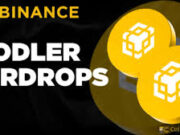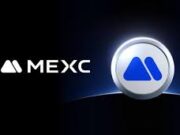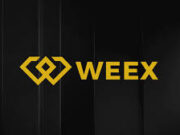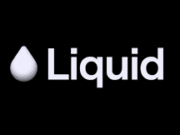In a bold move to bridge the gap between traditional commerce and the crypto economy, Coinbase has unveiled Coinbase Payments, a groundbreaking stablecoin payment solution designed to simplify and accelerate global transactions. Launched on June 18, 2025, this innovative platform leverages Circle’s USDC stablecoin and Coinbase’s layer-2 Base network to offer merchants seamless, 24/7 global settlements with minimal blockchain complexity. With an early integration already live with e-commerce giant Shopify, Coinbase Payments is poised to redefine how businesses worldwide handle transactions. Here’s why this launch is a game-changer for merchants, consumers, and the future of digital payments.
What is Coinbase Payments?
Coinbase Payments is a modular, full-stack stablecoin payment infrastructure tailored for commerce platforms, payment service providers (PSPs), and marketplaces. Built on Coinbase’s Ethereum layer-2 network, Base, it enables merchants to accept USDC—a U.S. dollar-pegged stablecoin—with near-instant settlements, lower fees, and global reach. The platform eliminates the need for businesses to manage complex blockchain infrastructure, making it accessible even for those without crypto expertise. As WuBlockchain noted in a post on X, Coinbase Payments is designed to “reduce platforms’ reliance on blockchain infrastructure,” allowing seamless integration into existing workflows.
The system comprises three key layers:
- Stablecoin Checkout: A wallet-native interface supporting hundreds of crypto wallets (e.g., Coinbase Wallet, MetaMask, Phantom) for a gas-free, user-friendly payment experience.
- E-commerce Engine: An API suite handling merchant operations like authorization, refunds, ledgering, and subscriptions, integrating stablecoin flows into existing dashboards.
- Commerce Payments Protocol: An open-source, smart contract-based layer on Base that manages secure, sub-second escrow and settlement, mimicking traditional payment mechanics like delayed capture.
This modular design ensures that merchants can adopt USDC payments without overhauling their systems, while customers enjoy fast, secure checkouts across borders.
Why Stablecoins? The USDC Advantage
Stablecoins like USDC are transforming global commerce by offering stability, speed, and cost efficiency. Unlike volatile cryptocurrencies such as Bitcoin or Ethereum, USDC is backed 1:1 by U.S. dollar reserves, ensuring a constant value that merchants and consumers can trust. In 2024, stablecoins processed a staggering $30 trillion in settlements, a threefold increase year-over-year, highlighting their growing role as a scalable alternative to traditional banking systems.
Coinbase Payments capitalizes on USDC’s strengths:
- Speed: Transactions settle in as little as 200 milliseconds on Base, compared to days for bank wires.
- Low Costs: Fees are as low as $0.01 per transaction, a fraction of traditional card network charges.
- Global Reach: USDC enables borderless payments, eliminating foreign exchange fees and multi-currency complexities.
- Transparency: Onchain execution via open-source smart contracts provides auditability and fraud prevention.
These features make USDC a compelling alternative to legacy payment systems, which often suffer from high costs, slow settlement times, and limited transparency.
Shopify’s Landmark Integration
The Shopify partnership is a cornerstone of Coinbase Payments’ launch. Starting in June 2025, Shopify merchants across 34 countries can accept USDC payments through Shopify Payments and Shop Pay, with no additional setup required. This integration, developed in collaboration with fintech giant Stripe, ensures merchants can receive settlements in local currencies or USDC, avoiding foreign transaction fees. Shopify’s CEO, Tobias Lütke, a Coinbase board member, emphasized the alignment with crypto’s ethos, calling it “the beginning of a lot of dominoes falling” for onchain commerce.
For consumers, the experience is seamless: select USDC at checkout, connect a supported wallet, and confirm the transaction. Shopify plans to sweeten the deal with 1% USDC cashback incentives for U.S. customers later in 2025, at no cost to merchants. This opt-out model—where merchants automatically accept USDC unless they opt out—marks a significant step toward mainstream crypto adoption.
The Bigger Picture: Stablecoins in Global Commerce
The launch of Coinbase Payments comes at a pivotal moment for stablecoins. The U.S. Senate’s recent passage of the GENIUS Act on June 17, 2025, establishes a federal framework for stablecoins, boosting their legitimacy with reserve requirements, transparency mandates, and bankruptcy protections. This regulatory clarity, combined with Coinbase’s infrastructure, positions USDC as a potential “default internet payment method.”
Major corporations like Visa, PayPal, and JPMorgan are already building stablecoin infrastructure, while tech giants like Apple and Meta explore similar integrations. In Europe, USDC’s compliance with the Markets in Crypto-Assets Regulation (MiCA) further cements its global credibility. Coinbase’s partnership with Stripe, which recently acquired stablecoin platform Bridge for $1.1 billion, underscores the fintech sector’s growing embrace of digital assets.
Posts on X reflect the excitement:
@AlvaApp called Coinbase Payments a “catalyst for USDC’s push into mainstream global commerce,” highlighting its potential to disrupt legacy PSPs with lower fees and simpler compliance.
@obchakevich_ noted that stablecoins, with $27.6 trillion in 2024 settlements, have surpassed Visa and Mastercard in transaction volume, signaling a shift toward crypto-native payments.
Challenges and Opportunities
Despite its promise, Coinbase Payments faces hurdles. Stablecoin adoption in e-commerce has been slowed by technical fragmentation and regulatory uncertainty. The proliferation of blockchains can fragment liquidity, and near-instant settlements make fraudulent transactions harder to reverse. However, Coinbase mitigates these risks by abstracting blockchain complexity and offering fiat off-ramps, ensuring merchants can operate within familiar workflows.
Looking ahead, Coinbase plans to enhance the platform with programmable rewards and expanded wallet support, further blurring the line between fiat and crypto economies. The company’s broader vision—articulated by CEO Brian Armstrong—includes making USDC the leading stablecoin and positioning Base as the go-to chain for onchain innovation.
Why This Matters
Coinbase Payments is more than a product launch; it’s a step toward a borderless, efficient global economy. By enabling merchants to tap into a $30 trillion stablecoin market, Coinbase is democratizing access to fast, low-cost payments. For small businesses, this means selling to customers worldwide as easily as next door. For consumers, it’s a chance to use crypto in everyday transactions with the simplicity of a credit card.
As
@GainsleyJustin posted on X, “Instant, 24/7, borderless payments, with no crypto complexity” is the promise of Coinbase Payments. With Shopify’s millions of merchants already onboard and more platforms invited to integrate via Coinbase’s developer portal, this solution could accelerate stablecoin adoption at an unprecedented scale.
What do you think? Will Coinbase Payments make USDC the backbone of global e-commerce? Share your thoughts below and join the conversation about the future of digital payments!
Sources: Coinbase, CryptoSlate, Cointelegraph, CryptoNews, WuBlockchain, and posts on X. For more details, visit Coinbase or Shopify.




























4cvd3u